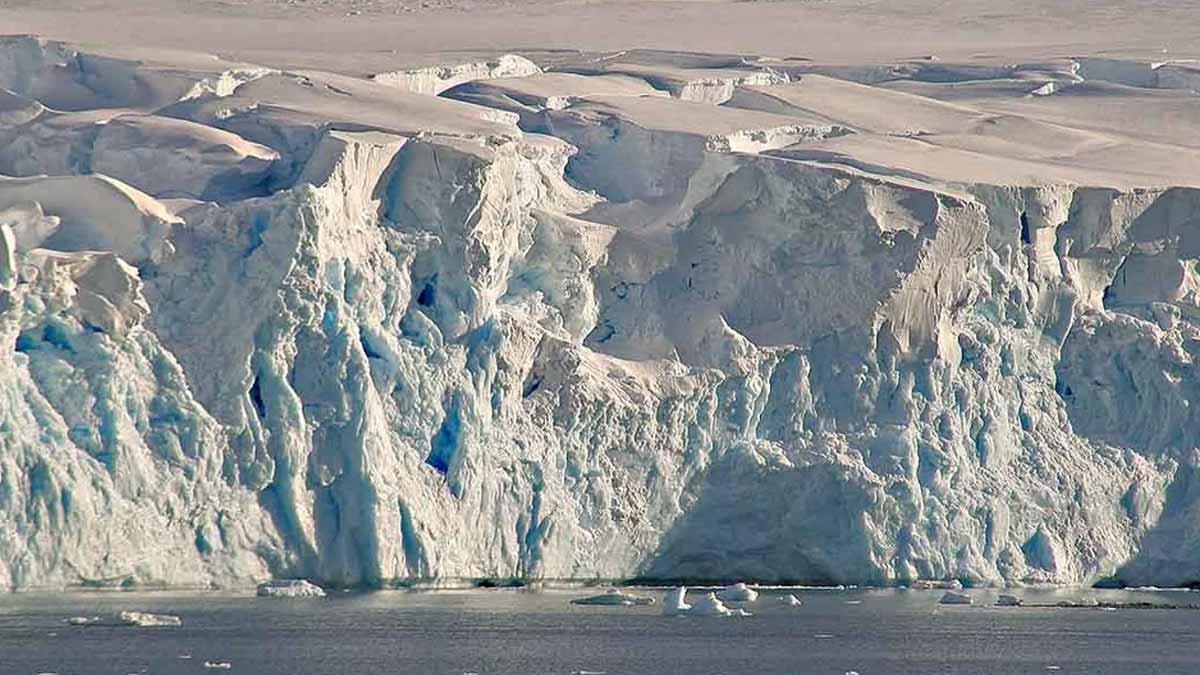A hidden river, life clinging to darkness, and a shelf that steadies oceans—the scene sounds unreal, yet it is real. Beneath the ice, water moves slowly, shapes the base, and changes what we expect at the surface. In this vast, white world, Antarctica guards a secret network that mixes freshwater and seawater, then sends it seaward. Scientists lowered a camera and met unexpected life. That single glimpse hints at systems that control melt, motion, and future coastlines.
A hidden river beneath the ice: what lies below
More than a kilometre under the Kamb Ice Stream, researchers reached liquid water through a borehole drilled over 487 metres. The camera showed a broad cavity under the Ross Ice Shelf, where a river slides toward the ocean at a slow pace. Depth, pressure, and salt keep it from freezing.
The river is tall like a 30-storey building and wide like a city block, which gives it room to carve channels in the ice. It blends freshwater from inland lakes with seawater that seeps under the shelf. That mix shapes the base and carries nutrients.
This discovery happened far from open water—400 kilometres inland—yet life was present. A shoal of creatures, lobster-like in form, crossed the camera’s light. In one remote place, Antarctica showed movement, energy, and food chains where darkness rules.
How Antarctica hides and moves a slow under-ice river
Think of the Ross Ice Shelf like a stopper. It holds back inland ice, so it helps keep sea levels in check. Under it, the river drains through a branching network that acts like plumbing. Lakes fill, then drain, and the water level in the river rises in pulses.
Researchers estimate a rise about once each decade when nearby lakes release their load. Those surges cut channels that let warmer, salty water reach fresh zones. The shelf thins from below as flow and heat nibble at the base. The shape of the cavity shifts as the river works.
Each rise moves nutrients and sediment that can feed hidden food webs. It also reshapes the roughness at the base, which changes how ice above slides. When the base gets smoother and thinner, friction drops. That makes it easier for land ice to move seaward.
Risks, benefits, and the delicate balance under the shelf
The cork effect helps today, yet changes at the base can reduce that grip. When the shelf thins from below, the land ice behind it can speed up. Sliding increases, then sea level rise accelerates. A few subtle millimetres at the base can reshape future coast risk.
Hidden rivers also support life where we did not expect it. Nutrients shift with each pulse, so small zones can bloom. That is a benefit for biology, while it also tells us how energy moves in the dark. The shoal shows that food can flow where light cannot.
Man-made pollution intensifies extreme weather, so storms, floods, and droughts hit harder. That context matters because Antarctica helps set the pace of seas that meet our coasts. The more we grasp these under-ice processes, the better we plan, build, and adapt.
What Antarctica’s figures reveal about tomorrow’s coasts
The main facts are stark. A borehole of more than 487 metres opened a window on a river over a kilometre deep. The cavity reaches the scale of a 30-storey tower in height and a city block in width. According to Earth.com, the team filmed it beneath the Ross Ice Shelf.
The expedition leader, Huw Horgan, reported water at the borehole’s end and a shoal seen 400 kilometres from the ocean. That distance matters because it proves ecosystems can exist far inland, inside a shelf that seems inert. The shelf is not static; it breathes with pulses.
As lakes drain about once a decade, the river level rises. Those surges can cut channels, thin ice from below, and change how ice slides. Small shifts at depth add up at the edge. Over years, they set terms for melt, flow, and the strength of the shelf.
From polar science to action at home
We cannot stop sub-glacial rivers, but we can change the pressures we add. Clean energy reduces pollution, so heat and extremes ease over time. In France, solar panels paired with battery storage keep lights on during power cuts and trim bills with steady power at home.
Support exists to help. Households may qualify for MaPrimeRénov’, energy-saving certificates (CEE), and reduced VAT on eligible work. Online platforms compare quotes from certified installers, so projects start with clear prices and vetted teams. A small choice today can lock in lower use later.
Local authorities invest in better flood alerts, dykes, and retention basins, while aid supports heat pumps and thermal insulation. Rising waters may shift pathogen risks, as some experts warn. Choices scale down too: skip single-use plastics, choose cleaner transport, and improve home efficiency—even far from Antarctica.
Why this hidden river changes how we think about the future
A slow river beneath ice, a shelf that acts like a stopper, and a flash of life show linked systems. What happens in Antarctica affects coasts that seem distant, because sea level and storms meet in our streets. Understanding these flows helps us act with care, speed, and focus.
